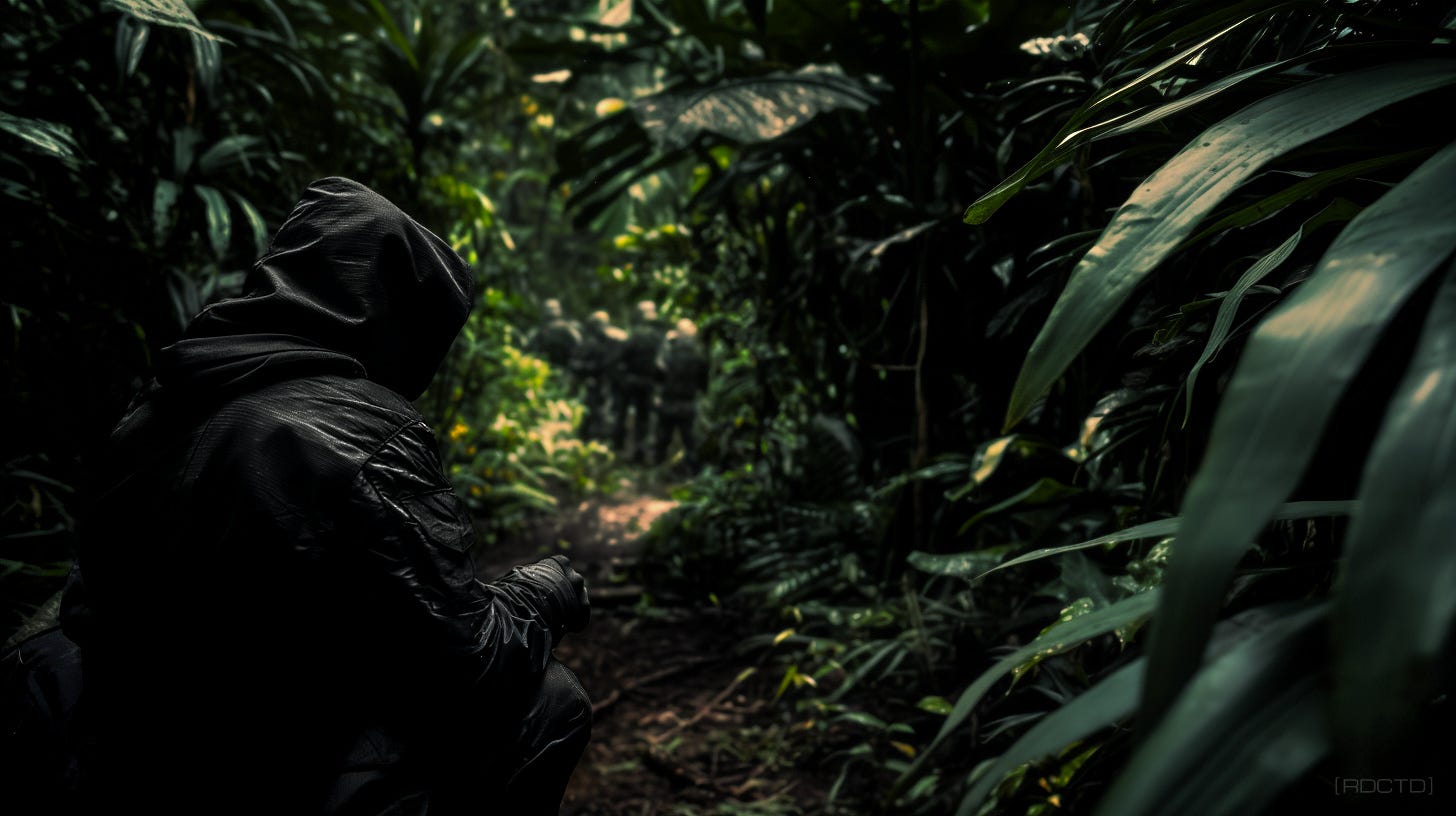Counter-tracking is the deliberate practice of evading pursuit by manipulating terrain, movement, and behavior to deny your adversary a usable trail.
It’s not ‘escape / evasion’ in the traditional sense but making pursuit itself unsustainable. It’s the process of breaking the pursuit to make every step they take behind you slower, less certain, and more costly until following you stops being viable. - RDCTD
In the jungle, this means controlling physical sign like footprints, bent vegetation, and scent trails. In urban settings, it extends to breaking patterns, avoiding surveillance coverage, and blending into civilian movement.
Regardless of the environment, the goal remains constant: force your pursuer to chase uncertainty rather than fact.
Understanding what a tracker or surveillance team is looking for is step one. Every footprint, routine, or decision made under stress can become a lead if not managed correctly.
In rural terrain, trackers interpret sign like a language; every snapped twig or disturbed footprint tells a story. In urban terrain, surveillance teams track digital signals, visual identifiers, and behavioral consistencies.
The operative’s job is to break that narrative before it forms, constantly disrupting the adversary’s logic by removing pattern and inserting misdirection.
Terrain selection is one of the most powerful tools an operative has in this fight. Choosing routes through terrain that either conceals movement or generates confusion for trackers is a core principle.
In jungle environments, that could mean walking in rocky streambeds to mask sign or using elevation to break scent and visual contact. In cities, it means using structures, crowds, underground paths, and vertical movement to disappear between camera zones and human observation.
Smart terrain use goes beyond concealment to forcing the adversary to over-commit, chase the wrong trail, or exhaust themselves looking in the wrong direction.
Behavioral counter-tracking is equally critical. Operatives who fall into routines (using the same café, route, or campsite) give their pursuers exactly what they need to catch up.
Predictability is a vulnerability. The disciplined operative constantly shifts their habits, rotates movement timing, changes appearances, and thinks from the enemy’s perspective: “If I were tracking me, what would I look for?”
This mindset keeps the adversary in reaction mode, constantly second-guessing their assumptions and wasting time verifying false leads.
Deception is where counter-tracking becomes offensive. A false trail through soft ground, a change in gait, or a planted piece of gear can create hours of delay for a trained tracker.
In urban areas, the use of dummy vehicles, quick-change clothing, or deliberate engagement with predictable surveillance zones - only to vanish seconds later - can fracture an entire pursuit team’s coordination.
You’re buying time while forcing your adversary to waste effort, second-guess every lead, and lose confidence in their own intelligence.
The more dead ends you create, the more control you gain over the pace and direction of the pursuit. Effective deception takes pressure off your movement by placing pressure on their decision-making.
Counter-tracking isn’t about hiding well and hoping for the best. It’s denying access, controlling perception, and turning the pursuit into a strategic failure.
The operative is more than gone, they were never seen in the first place.




